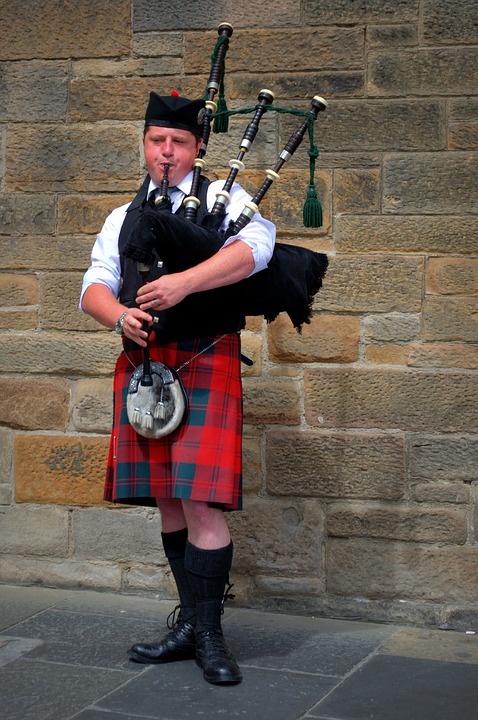The Joy of Classics (29)
Jean-Joseph Mouret (1682- 1738), a french composer from Baroque, composed this evocative piece.
I didn't know anything about him and I have simply analysed the score a little bit.
Ok, at first if you check the score (please, see below), you can read the title: "La Montagnarde- The Highland girl".
It means that this piece is probably inspired in some folk music from the Highlands, Scotland.
But, ¿how do I come to that conclusion?
During 8 measures, the left hand establishes an harmonic and tonal basis with the G Major Chord. And that´s exactly what a bagpipes does, naturally in other tonalities (this piece is composed in C Major). And that's also the main signal of identity of the music coming from Scotland: a melody through a Pedal Note (a pedal note is a sustained tone, normally y in the bass, during which at least one dissonant harmony is sounded in the other parts).
Then, a nice and conventional accompaniment of the left hand with half-notes and crochets appears during three measures (remember that Mouret was a fine composer from Paris...) , and finally it returns again as a conclusion to the main Theme, re-using whole notes on the left hand.
For an unknown reason, J.-J. Mouret composed this melody, and perhaps he imagined a girl singing a song which had a Scottish influence, or maybe he imagined a bagpipe player while a girl were dancing or just listening besides him.
Or maybe his neighbour in Paris was from Scotland and sometimes he played his bagpipes too!
Who knows?
That 's the mystery of music.
You never know when it can arise...
Isn't it wonderful?
@titin

(photo by Pixabay)
Jean-Joseph Mouret (1682- 1738), un compositor francés del Barroco, compuso esta evocativa pieza.
No conocía nada sobre él y simplemente he analizado un poco la partitura.
Bien, primero si os fijáis en la partitura podéis leer el título: "La Montañesa- La chica de las Tierras Altas".
Esto significa que esta pieza probablemente está inspirada en alguna música popular de las Tierras Altas de Escocia
Pero, ¿cómo llego a esta conclusión?
Durante 8 compases, la mano izquierda establece una base tonal y armónica con el acorde de Sol Mayor. Y eso es exactamente los que hace una gaita escocesa, naturalmente en otras tonalidades (esta pieza está compuesta en Do Mayor). Y ese es también el principal signo de identidad de la música que procede de Escocia: una melodía a través de una Nota Pedal (se llama nota pedal a un sonido o nota que se prolonga, sobre el cuál se suceden algunas veces otros acordes o notas, algunos de ellos/as disonantes).
Después, un amable acompañamiento convencional de la mano izquierda con blancas y corcheas aparece durante tres compases (recuerda que Mouret era un sutil compositor de París), y finalmente retorna otra vez como conclusión al tema principal, re-utilizando las redondas sobre la mano izquierda.
Por un motivo desconocido, J.-J.- Mouret compuso esta melodía, y quizás se imaginó a una chica cantando una canción que tenía influencia escocesa, o quizás imaginó a un gaitero que tocaba mientras una chica estaba bailando, escuchando a su lado.
O quizás su vecino en París era de Escocia y alguna veces ¡también tocaba la gaita!
¿Quién sabe?
Es el misterio de la música
Nunca se sabe cuándo puede salir...
¿No es maravilloso?
@titin
.jpg)
Hi @titin,
Thank you for the interesting commentary and entertaining performance of "La Montagnarde", the baroque style is clearly recognizable, and you're right about the bagpipe sound from the left hand! I enjoyed listening.
We have shared this article on the Steemit's Best Classical Music Facebook page, and included it in our latest post, Steemit's Best Classical Music Roundup [Issue #10] .